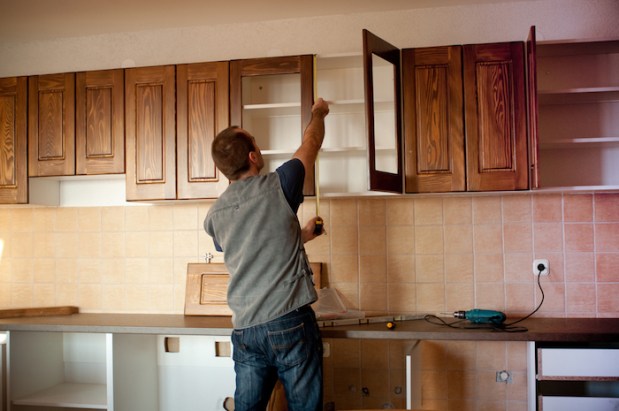Baby Boomers Vs. Millennials: Home Renovations Edition

When it comes to home repairs, there are myriad factors contributing to the reasons for them. While some homeowners want to knock out a wall to enlarge a space, others seek to add on extra rooms or remodel their kitchen area.
Recently Harvard University’s Joint Center for Housing Studies conducted a study titled Improving America’s Housing 2017: Demographic Change and The Remodeling Outlook that looked at the various types of home renovations and which of those are more popular among different age groups.
Since seemingly most people aren’t in a position to build a house from the ground up, which would be ideal, it’s reasonable to suggest that the home improvement market is a huge money-making industry. While home repair spending was at $220 billion in 2015, the research expects that figure to grow to approximately $270 billion by 2025. As to be expected, baby boomers and millennials were at different ends of the spectrum in terms of the types of houses bought, differences in improvement choices and amount of money spent on repairs.
Although the research shows that all age groups are spending a great deal of money on home repairs, baby boomers came in at the top of the list when it comes to money spent. Research showed a significant increase in home repair spending from those over age 55 with an rise from 31 percent in 2005 to 52 percent in 2015. With most baby boomers reaching retirement age during this time period, adjustments are starting to be made to fit this new lifestyle.
The types of modifications baby boomers are fixated on tend to favor simplifying the home to accommodate their advanced age. As boomers are living in their homes until a much later stage in life, this group unfortunately deals with more disabilities. As such, this age group is remodeling their homes to incorporate more single-floor living along with wider doorways and hallways.
As we reported back in February, millennials are saddled with much more debt than baby boomers were at the same age. Due to this impact on most of their decision making when it comes to large purchases, it’s no surprise this generation is dealing with an affordability issue and tending to opt for the cheaper fixer-upper.
Another factor impacting the millennial generation is the 2008 recession. Harvard’s research showed an astounding drop in homeowners under the age of 35, falling from 43 percent in 2005 to 31 percent in 2015, due in part to this difficult economic time period. Millennials are buying homes at a much slower rate due to school loan debt, the recession and rising prices on the real estate market.
The Joint Center for Housing Studies’ managing director, Chris Hebert, commented on these millennial financial challenges to Realtor magazine. He said, “Despite these challenges, the remodeling industry should see numerous growth opportunities over the next decade. Strong demand for rental housing has opened up that segment to a new wave of capital investment, and the shortage of affordable housing in much of the country makes the stock of older homes an attractive option for buyers willing to invest in upgrades.”
All of these factors explain the varying differences between the amount of money spent on home repairs between the two generations. The challenge that comes to mind is whether younger generations will reach the same spending rate as that of older generations. With the baby boomer generation being one of the largest age groups reaching retirement age and beyond, there will likely be more homes coming on the market in the next 10 to 20 years.
With more homes becoming available, more people outside of the millennial and baby boomer generation will have the opportunity to buy a home at more reasonable prices. As it stands now, the supply isn’t meeting the demand, which is the main culprit in the increase in expensive homes.
